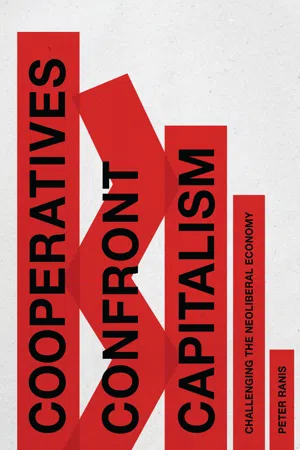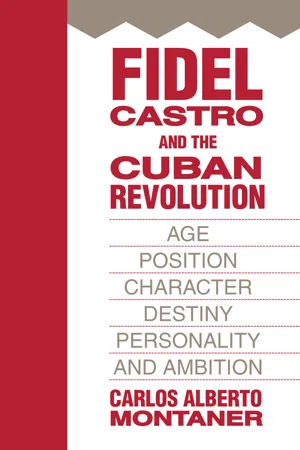Cuban Economy
The Cuban economy is characterized by state ownership of the means of production and central planning. It has historically been heavily reliant on sugar exports, but the government has made efforts to diversify into other sectors such as tourism, biotechnology, and pharmaceuticals. The economy has faced challenges due to trade embargoes and internal inefficiencies, but recent reforms have aimed to liberalize certain aspects of the economy.
4 Key excerpts on "Cuban Economy"
- eBook - ePub
Regional Development and Planning for the 21st Century
New Priorities, New Philosophies
- Allen G. Noble, Frank J. Costa, Ashok K. Dutt, Robert B. Kent, Allen G. Noble, Frank J. Costa, Ashok K. Dutt, Robert B. Kent(Authors)
- 2018(Publication Date)
- Routledge(Publisher)
...Centralized planning politicizes the economy and it constrains market signals in the form of prices and seeks to keep producers from being motivated only by self-interest (Zimbalist and Brundenius 1989, 141). Deep changes must also take place in the labor process—bringing in worker participation—and in mass participation in forging state policy (Lopez Segrera 1972). The Cuban state labor force, however, is downsizing. The implications these layoffs portend for Cuba’s social relations of production are unclear. Cuba’s pattern of market reform has been erratic over the past two decades. Between 1973 and 1986, the state sold surplus products in government stores at fixed prices. Free peasant markets prevailed briefly in 1986 but were eliminated because of alleged high profiteering among middle brokers. Castro claimed that some small farmers where turning over only 10 percent of their crops to the state. The 1993 reform relating to self-employment, the circulation of the dollar, and the loosening restrictions on Cuban exiles visiting the island are the most recent policy changes on this front. The Eastern European Example Cuba’s role in the international socialist alliance was unique. Unlike Afghanistan, it was not a buffer state between the USSR and economically and politically threatening nations in South Asia and China (Kakar 1995, Cordovez and Harrison 1995; Rubin 1995). Instead, it provided a powerful symbol of anti-U.S. hegemony in the “American Lake”, and was therefore a bulwark of socialism for the poor countries of the Third World. In a post-Cold War era, this symbolism is anachronistic. The experience of the former Soviet Union and Eastern bloc nations should be telling in the case of Cuba. Havana’s micro-enterprises must cope with pricing, advertising, return business, buying in bulk, and access to credit...
- eBook - ePub
Cooperatives Confront Capitalism
Challenging the Neoliberal Economy
- Peter Ranis(Author)
- 2016(Publication Date)
- Zed Books(Publisher)
...Another powerful motor for economic stimulation has been the freeing of sales of both houses and automobiles without institutional regulations (Pérez Villanueva et al. 2012). Overall, the decentralization of the Cuban Economy appears to parallel the needs of Cuban provinces and enhance the proliferation of cooperative formations guided by the needs of people in local communities. These are continual challenges to the centralized cultural traditions of the Cuban socialist state. It seems increasingly clear that Cuban professionals, since the release of the 2011 Guidelines, have been encouraged to think strategically, even if these approaches represent significant departures from past economic practices. There is much discussion in Cuba not only concerning cooperatives but also the formation of mixed and co-administered enterprises, as well as municipal and communal economic entities. Economists in particular have the ears of departmental ministries. For example, members of the Center for the Study of the Cuban Economy (CEEC) hold dozens of regularly scheduled meetings with governmental ministries and state enterprise officials on the optimum means of implementing the party economic Guidelines (interview, Betsy Anaya 20 June 2013). On the other hand, the left critique of Cuban state socialism does not have the ear of the government but represents an insistent resistance to both returning to corporate capitalism and the continuation of socialist blueprints inspired by party congresses from above without worker participation. Pedro Campos Santos, one of the more prolific critics within Cuba, takes this approach. He has argued that neither the Cuban state nor large private capital can fulfill the needs of wage workers. In both cases, the salaried working class lacks the power to control the means of production – the key to self-empowerment. This requires rather that organizing begin from below, allowing workers to create productive organizations of self-management...
- eBook - ePub
Fidel Castro and the Cuban Revolution
Age, Position, Character, Destiny, Personality, and Ambition
- Carlos Alberto Montaner(Author)
- 2017(Publication Date)
- Routledge(Publisher)
...Appendix State of the Cuban Economy before Castro If in 1959 the economic scene in Cuba had been that of Bangladesh or Haiti, much of the reasoning in this book would not be valid. In a country where people die of hunger in the middle of the streets, almost any measure to alleviate such a situation would be acceptable. Such was not the case in Cuba. To prove this, I am summarizing the work of Leví Marrero (foremost geographer and historian of the Cuban Economy), which appeared in the third edition of his Geography of Cuba, published by Editorial Minerva in 1966, and which has been translated in the Soviet Union. Lacoste has selected fifteen characteristics of underdevelopment as a guide for the social scientist to draw his own conclusions from the data available. The following is a review of such characteristics in Cuban society in the 1950s. 1. Nourishment 2.Agriculture 3. National income per capita and standard of living 4. Industrialization 5. Energy consumption 6. Economic dependency 7. Commercial sector 8. Social structure 9. Importance of the middle class 10. National integration 11. Unemployment and underemployment 12. Education 13. Demographic growth 14. Health 15. Political consciousness 1 Nourishment Cuba was in twenty-sixth place with 2,730 calories per day in the chart regarding the caloric intake of 93 countries computed on a world scale by Ginsburg (according to FAO, it had 2,870 calories). The minimum adequate requirement is 2,500 calories per day. In America, only Argentina (3,360), the United States (3,100), Canada (3,070), and Uruguay (2,945) were ahead of Cuba. Regarding sources of animal protein, Cuba was one of the most proportionately supplied with 6 million head of cattle, equivalent to one head per inhabitant. The slaughter of cattle and hogs in 1957 yielded an annual per capita of 34 kilograms of meat, not including poultry and fish...
- eBook - ePub
- Andres Solares(Author)
- 2020(Publication Date)
- Global Summit House(Publisher)
...Even pork, the traditional Cuban food, is very scarce and expensive. Ham is almost nonexistent and several Cuban generations almost know it only by name. The population of pigs has decreased to a level unimaginable decades ago. Milk and derivates are only supplied for small children, in very limited amounts. Once the children are seven years old, they are not entitled to them any more. The very small and rationed supply of chicken comes mostly from imports because the national production is very low, and Cuba does not have anymore any production of corn to sustai n it. The main traditional commodities Cuba exported before 1958 were raw and refined sugar, nickel and other minerals, tobacco, fishing products, and varied agricultural products, which together with the tourism industry, were the source of Cuban income abroad, but there was another much more varied production of all sorts of agricultural and industrial products directed to the national market, which, as I explained before, satisfied a large portion of the population n eeds. As I mentioned, all these industrial and agricultural sectors were full of potential, and they were in the middle of an accelerated process of expansion, directed to satisfy the needs and possibilities of foreign markets and also to replace those imports of numerous industrial products that could be produced in Cuba, from cars to textiles and including all sorts of commercial products, this also being supported by the high rate of increase of the local demand due to the growth of the Cuban eco nomy. Castro stopped all this process and after fifty years, all the mentioned productive fields are in state of abandonment and technological decadence, incredibly low productivity, and financial disa rray. There is practically no aspect of the Cuban Economy that at this moment can be compared with any logical projection of what Cuba would have, if Castro has not been there, this despite the huge subsidies he has received and all the numerous...



